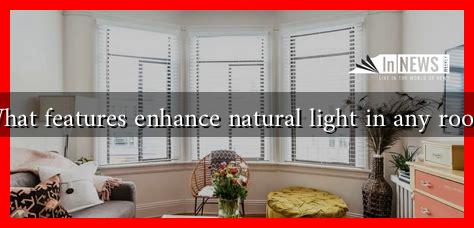-
Table of Contents
What Features Enhance Natural Light in Any Room
Natural light is a coveted feature in any home or office space, known for its ability to enhance mood, improve productivity, and create a sense of openness. However, not all rooms are designed to maximize this precious resource. In this article, we will explore various features and design elements that can significantly enhance natural light in any room, making it brighter and more inviting.
The Importance of Natural Light
Before diving into the features that enhance natural light, it’s essential to understand why it matters. Studies have shown that exposure to natural light can lead to numerous benefits, including:
- Improved mood and mental health
- Increased productivity and focus
- Better sleep quality
- Reduced energy costs
According to a study by the National Institutes of Health, natural light exposure can significantly affect our circadian rhythms, leading to better overall health. With this in mind, let’s explore how to enhance natural light in any room.
1. Window Placement and Size
The most straightforward way to increase natural light is through windows. The placement and size of windows can dramatically affect how much light enters a room.
- Large Windows: Opt for larger windows to allow more light in. Floor-to-ceiling windows are particularly effective in creating a bright atmosphere.
- Strategic Placement: Position windows on the south or west side of the building to capture maximum sunlight throughout the day.
- Skylights: Installing skylights can bring in light from above, especially in rooms where wall space is limited.
2. Use of Mirrors
Mirrors are a powerful tool for enhancing natural light. They can reflect light and create the illusion of a larger space.
- Placement: Position mirrors opposite windows to reflect incoming light back into the room.
- Decorative Mirrors: Use decorative mirrors as focal points that not only enhance light but also add aesthetic value.
For example, a well-placed mirror in a small living room can make the space feel more open and airy, effectively doubling the light that enters.
3. Light-Colored Walls and Decor
The color of your walls and decor can significantly impact how light is perceived in a room.
- Light Colors: Use light colors such as whites, creams, and pastels to reflect light rather than absorb it.
- Glossy Finishes: Consider using glossy paint finishes, which can reflect more light than matte finishes.
- Minimalist Decor: Keep decor minimal to avoid clutter, allowing light to flow freely throughout the space.
4. Open Floor Plans
Open floor plans are increasingly popular for their ability to create a sense of space and light. By removing unnecessary walls, you can allow light to travel more freely.
- Flow of Light: An open layout enables light from one room to illuminate adjacent spaces.
- Multi-Functional Spaces: Consider designing multi-functional areas that serve various purposes while maintaining an open feel.
5. Window Treatments
Window treatments can either enhance or block natural light. Choosing the right options is crucial.
- Sheer Curtains: Opt for sheer or light-filtering curtains that allow light to enter while providing some privacy.
- Blinds: Use adjustable blinds that can be opened fully during the day to maximize light.
Conclusion
Enhancing natural light in any room is not only about aesthetics; it’s about creating a healthier and more inviting environment. By considering window placement, using mirrors, selecting light colors, embracing open floor plans, and choosing the right window treatments, you can significantly increase the amount of natural light in your space. As you implement these features, remember that the goal is to create a harmonious balance between light and design, ultimately leading to a brighter, more uplifting atmosphere.
For more tips on enhancing your living space, check out resources like Houzz for inspiration and ideas.


